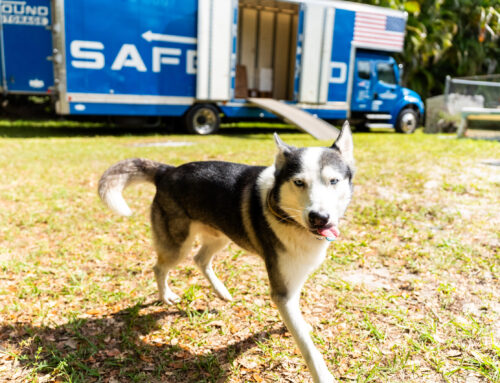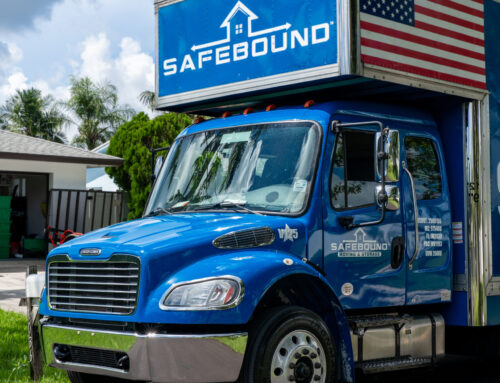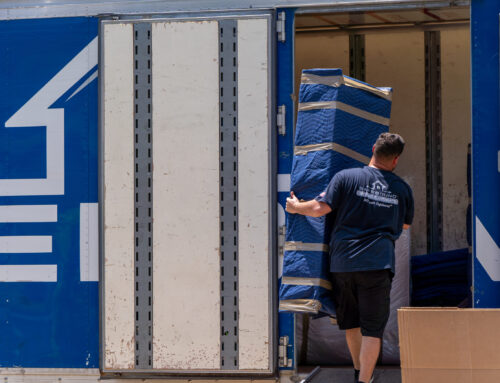As a high-end moving company, Safebound Moving & Storage understands that relocating to a new home can be a journey filled with anticipation and excitement. However, unpredictable weather events can quickly turn a well-planned move into a challenging ordeal. In this article, we’ll explore how unexpected weather conditions affect the moving experience and offer practical tips to navigate these unforeseen challenges.
1. Planning and Preparation
Weather is an uncontrollable factor that can significantly impact your moving plans. When planning a move, it’s crucial to consider the time of year and typical weather patterns in your current and destination locations. Summer months might bring extreme heat or thunderstorms, while winter could mean dealing with snow and ice.
Tip: Always check the weather forecast in the days leading up to your move. This will help you prepare for any sudden changes.
2. Safety First
The safety of everyone involved is the top priority. Severe weather conditions like thunderstorms, heavy rain, or snow can create hazardous conditions. Slippery roads, poor visibility, and high winds are just a few examples of how weather can pose risks.
Tip: If extreme weather is forecasted, consider rescheduling your move. No timeline is worth compromising safety.
3. Protecting Your Belongings
Rain, snow, and even excessive heat can damage your belongings. Electronics, wood furniture, and books are particularly susceptible to weather-related damage.
Tip: Use waterproof covers for sensitive items and disassemble larger pieces if possible to make them easier to manage in adverse conditions.
4. Flexibility is Key
Flexibility is crucial when dealing with weather-related disruptions. Delays are often inevitable, and it’s important to have a backup plan.
Tip: Communicate regularly with your luxury storage service. At Safebound Moving & Storage, we keep our clients informed about any changes or delays due to weather conditions.
5. The Role of Professional Movers
A professional moving company like Safebound Moving & Storage plays a vital role in navigating unexpected weather. Experienced movers are trained to handle your belongings safely, even in adverse conditions.
Tip: Trust your movers. They have the expertise and equipment to protect your possessions and ensure a smooth moving process, regardless of the weather.
6. Emotional Impact
The stress of moving can be compounded by bad weather. It’s normal to feel anxious or frustrated when your plans are disrupted.
Tip: Stay positive and focus on the bigger picture. A new home and new beginnings are just around the corner.
7. After the Move
Once you’ve arrived at your new home, there might be additional weather-related challenges. Unpacking in the rain or snow can be difficult, and extreme temperatures can make the process uncomfortable.
Tip: Prioritize unpacking essential items first and take breaks as needed. If the weather is too severe, it might be best to wait until conditions improve.
8. Learning from Experience
Each move offers a learning opportunity. Reflect on what worked well and what could be improved for future moves.
Tip: Keep a moving checklist and add notes about how you managed the weather challenges. This can be a valuable resource for your next move.
9. Community Support
In times of severe weather, community support can be invaluable. Neighbors and local businesses often come together to help those in need.
Tip: Don’t hesitate to ask for or offer help. Community spirit is particularly strong during difficult times.
10. The Bigger Picture
Finally, it’s important to remember that weather is just one aspect of your moving journey. Despite the challenges it may present, the end goal remains the same: starting a new chapter in your life.
Tip: Keep your eyes on the prize. Your new home awaits, and a little weather won’t change that.
In conclusion, while unexpected weather events can impact the moving experience, being prepared and flexible can significantly mitigate these challenges. At Safebound Moving & Storage, we’re committed to helping our clients navigate these situations with as little stress as possible. Remember, a storm might delay your journey, but it can’t stop you from reaching your destination.




